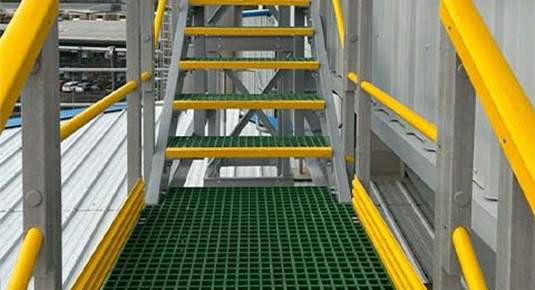loading...
- No. 9, Xingyuan South Street, Dongwaihuan Road, Zaoqiang County, Hengshui, Hebei, China
- admin@zjcomposites.com
- +86 15097380338
- Welcome to visit our website!
FRP Filter Tank Solutions for Efficient Water Treatment Systems
Understanding FRP Filter Tanks Innovative Solutions for Water Treatment
In recent years, the emphasis on sustainable practices and stringent environmental regulations has driven the need for advanced water treatment solutions. Among these, Fiberglass Reinforced Plastic (FRP) filter tanks have emerged as a preferred choice for various industrial and municipal water treatment applications. This article will explore the design, advantages, applications, and maintenance of FRP filter tanks, shedding light on why they are increasingly becoming a staple in water treatment facilities.
What Are FRP Filter Tanks?
FRP filter tanks are pressure vessels made from fiberglass reinforced plastic, which combines plastic resin with fiberglass filaments. This composite material is renowned for its durability, corrosion resistance, and lightweight properties. FRP tanks are designed to hold various types of filtration media, such as sand, activated carbon, or specialty filters, making them versatile solutions for different water treatment processes.
Design Benefits
The unique properties of FRP provide a range of design benefits. Firstly, FRP tanks are highly resistant to corrosive elements present in water, such as chlorine and salts. Unlike traditional metals or concrete, which can degrade over time when exposed to these elements, FRP maintains its integrity and performance, ensuring longevity and reliability.
Moreover, the lightweight nature of FRP facilitates easier handling and installation. This advantage can significantly reduce transportation costs and labor during installation. As a result, FRP filter tanks can often be installed in areas that would be impractical for bulkier alternatives, such as metal or concrete tanks.
Advantages of FRP Filter Tanks
One of the key advantages of FRP filter tanks is their resistance to scaling and fouling, which can impair the effectiveness of filtration systems. With less buildup on tank surfaces, maintenance efforts are minimized, leading to improved operational efficiency. Furthermore, FRP is an excellent insulator, which helps in maintaining a stable temperature within the tank, thus enhancing the performance of the filtration process.
frp filter tank

Additionally, FRP tanks are customizable. Manufacturers can engineer tanks to meet specific requirements, such as size, shape, and internal configurations, making them suitable for various applications, from residential water treatment systems to large-scale industrial plants.
Applications of FRP Filter Tanks
FRP filter tanks are used in a wide range of applications, demonstrating their versatility and effectiveness. In municipal water treatment facilities, they play a crucial role in the filtration of drinking water, ensuring that contaminants are effectively removed to meet safety standards.
In industrial applications, FRP filter tanks are employed in processes such as wastewater treatment, where they efficiently remove impurities and toxins before the water is discharged or reused. They are also utilized in chemical processing, food and beverage production, and aquaculture, where clean water is essential for operational efficiency and product safety.
Maintenance Considerations
While FRP filter tanks are designed for durability, regular maintenance is still essential to ensure their optimal performance. Routine inspections should be conducted to check for any signs of damage, wear, or leaks. The filtration media within the tanks also requires periodic replacement, depending on the specific conditions of usage.
Flushing the system to remove accumulated debris and contaminants should be done at regular intervals. This practice not only extends the life of the filter media but also maintains the efficiency of the filtration process. Operators should follow the manufacturer's guidelines to implement a proper maintenance schedule tailored to their specific application.
Conclusion
FRP filter tanks represent a significant advancement in the field of water treatment, offering a combination of strength, resilience, and versatility. As industries continue to seek sustainable and efficient solutions to meet growing water treatment demands, the adoption of FRP technology is likely to rise. By understanding their benefits and applications, water treatment facilities can make informed decisions that enhance their operations while contributing to environmental sustainability. Ultimately, the use of FRP filter tanks highlights the ongoing innovation within the water treatment sector, highlighting a commitment to improving water quality and resource management.
-
GRP Structures: The Future of Lightweight, High-Performance EngineeringNewsJun.20,2025
-
FRP Water Tank: High-Performance Storage for Corrosive and Clean Water SystemsNewsJun.20,2025
-
FRP Square Tube: The New Industry Standard for Chemical and Structural ApplicationsNewsJun.20,2025
-
FRP Pultruded Profiles: The Ultimate Choice for Lightweight Structural StrengthNewsJun.20,2025
-
FRP Handrails: The Safer, Smarter, and Stronger Choice for Modern InfrastructureNewsJun.20,2025
-
FRP Grating: The Smart Solution for Durable, Lightweight Industrial FlooringNewsJun.20,2025
-
Why Choose a Galvanized Water Tank for Your Storage NeedsNewsMay.21,2025
